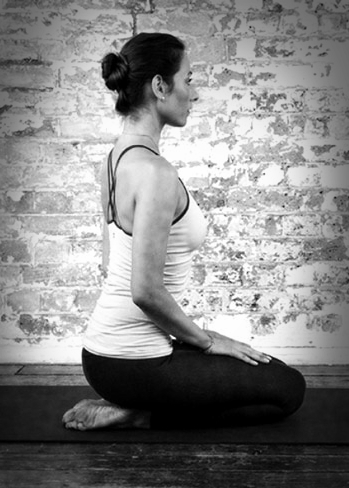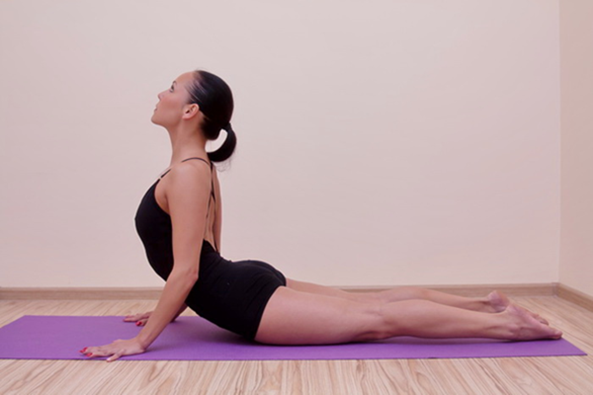How Yoga Causes Serious Diseases
***
Today, yoga classes are closely associated in society with a healthy lifestyle. Usually, this is exactly what many healthy lifestyle experts say - "start eating right, do yoga, exercise, etc."
In Moscow fitness clubs, again, yoga classes are almost always present. Not to mention the countless sections / circles. This is a very popular way of healing, especially among women. Among my female acquaintances, most yoga was or is being practiced. Yes, I myself used to be fond of this for about two months, a long time ago, in my youth. There were no consequences, negative or positive. But over time, I formed a sharply negative opinion about this "physical education" (hereinafter, we are talking specifically about the "gymnastic" aspect of classical yoga).
First, I found out that yogis do not shine with health and longevity at all. Secondly, official medicine has not adopted this healing technique, apparently because there has not been a consensus on any significant positive effects.
Of course, I have come across people (usually women) in my life with stories of miraculous healings. But it was all from the series - "let's go to the grandmother, she conjured and everything resolved." Yoga in their stories can be successfully replaced by wearing a magnetic bracelet, drinking charged water, and similar magical nonsense.
And recently in The Times I came across an interesting article about the dangers of yoga, which finally dotted the “and”.
The text is very long, in some places I will freely retell, in some places I will skip, where it is important - I will translate it exactly.
How Yoga Can Wreck Your Body
The author of the article is a 30-year-old journalist who injured his intervertebral disc in his lower back, tried to cure himself with yoga and failed. So he turned to a famous New York yoga instructor who is known for specializing in yogi injuries and knows everything not only about the merits of these activities, but also can tell a lot about the downside. His name is Glenn Black, he studied yoga in India, then practiced for many years, has an extensive clientele among the stars and even the yoga trainers themselves, conducting master classes for them.
Here at such a master class, the journalist managed to talk with Black and hear from him a lot of discouraging information.
The first thing he least expected to hear from a man who had devoted his whole life to yoga was when he said that he had come to the conclusion that the vast majority of practitioners should stop doing it. Fully. It's just too dangerous for their health. Black said that not only beginners, but even famous instructors often do serious harm to themselves, and instead of yoga, they need exercise therapy or even treatment. Yoga is only suitable for people in excellent physical shape, it is not for everyone.
According to Black, various factors can increase the risk for the average person. First of all, this is that the technique was developed by Indian practitioners for whom sitting, for example, cross-legged, is an everyday habit. And yoga asanas have become only a development of postures familiar to Indians. Modern office workers, after sitting all day in a chair, come to the gym a couple of times a week and try to twist into a position for which they have neither flexibility nor health.
All this is exacerbated by the explosive growth in the popularity of yoga (in the US, the number of practitioners increased from 4 million in 2001 to 20 million in 2011), which has increased the number of inexperienced instructors who simply do not understand how they can harm students.
A lot of people physically and mentally put pressure on students so that they take certain poses "through I can't."
When such unfortunate instructors come to Black with serious injuries, he simply tells them - "Quit yoga!" They look at him like he's crazy, but Black is sure that this is their only way to be cured.
The author asked what were the most serious yoga teacher injuries he had ever dealt with, and Black said he knew several "stars" who injured their Achilles tendons by overdoing the basic Downward Dog Pose.

He also saw completely "killed" hips. One of the most famous American yoga teachers simply lost mobility in her hip joints, she needed to undergo an operation to implant prostheses. However, she continued to teach!
And many instructors have such big back problems that they are forced to teach lying down!
Among yoga devotees, from gurus to their assistants, there is a widespread opinion about its miraculous healing power.
They say that yoga calms, heals, raises energy and strengthens. Indeed, these activities can lower blood pressure, produce natural antidepressants, or even improve your sex life.
But the yoga community has long remained silent about the overwhelming pain it can cause.
Jagannath Ganesh Gun, one of those who brought yoga into modern times, left no hint of possible injuries in his journal Yoga Mimamsa or book Asanas (1931). Indra Devi avoided such references in her bestselling book, Forever Young, Forever Healthy (1953), as did B.K.S. Iyengar in his work "Light on Yoga", published in 1965. Assurances about the complete safety of yoga are contained in the self-study books of such authors as Swami Sivananda, Pattabhi Jois and Bikram Chowdhury. "Real yoga is as safe as mother's milk" proclaimed Sivananda, the great guru who made 10 world tours and founded several ashrams on several continents.
But a growing body of medical evidence supports Glenn Black's view that for many people, the use of commonly practiced postures carries an inevitable health risk.
The first observations of "yoga diseases" appeared several decades ago and were published in respected medical journals: among them such as "Neurology", the British Medical Journal, the Journal of the American Medical Association. The problems described ranged from mild harm to permanent disability.

In one case, a college student who had been practicing yoga for more than a year, after intensive practice of vajrasana (sitting on his knees), found that his legs did not obey well, he had difficulty walking, climbing stairs and running.
Doctors diagnosed him with a problem with the branch of the sciatic nerve, passing under the knees. Sitting on your knees reduced the blood supply to this nerve, causing it to malfunction. As soon as the student abandoned this posture, he quickly recovered.
Clinicians have already noted a sufficiently large number of such cases to even introduce a special term: "yoga foot drop" (yoga foot drop)
More ominous messages followed later. In 1972, a prominent Oxford neuroscientist, Rich Russell, published an article in the British Medical Journal arguing that although extremely rare, some yoga poses can cause stroke in relatively young healthy people. Russell discovered that brain damage can be caused not only by direct trauma to the skull, but also by the rapid movements of the neck, as well as the excessive bending of the neck that occurs in some yoga postures.
The fact is that normally the neck can bend 75 degrees back, 40 degrees forward, 45 degrees to the sides and rotate 50 degrees to the right and left. Yoga practitioners usually greatly exceed these possibilities. The average student can turn their head as much as 90 degrees, which is twice the limit. And such super-flexibility of the neck is encouraged by teachers! Iyengar emphasizes that in the cobra pose the head should be thrown back as far as possible, and in the shoulderstand the head, pressed to the chest, should form a right angle with the body. And he calls such a pose (supposedly stimulating the thyroid gland) - "one of the most valuable gifts from wise ancestors."

Russell warns that such extreme head and neck positions can injure the vertebral arteries, leading to clot formation or occlusion, with subsequent brain damage. After all, these arteries are connected to the basilar artery, which feeds the most important parts of the brain responsible for coordination, breathing, eye movement, and other vital functions.
It is known that a decrease in blood flow through the basal artery leads to strokes, which are rarely accompanied by speech disorders or lead to loss of consciousness, but damage the basic mechanisms up to death.
In most patients with this type of stroke, basic functions are restored, but sometimes headaches, dizziness, and coordination problems can last for years.
Russell is also concerned that yoga as a cause of stroke may be hidden from doctors, since brain damage can occur with a long delay (up to several hours), for example, only at night and some other possible cause may attract the doctor's attention.
In 1973, a year after Russell's work was published, Willibald Nagler, a prominent rehabilitation specialist at the Medical College of Cornell University, published an article about a strange case.
A healthy 28-year-old woman suffered a stroke while performing wheel asana while doing yoga. When taking this position, at some point she was balancing on her head thrown back and suddenly experienced a severe headache. She could no longer stand up on her own, as well as walk.
The woman was taken to the hospital - her right side of the body lost sensitivity, her left arm and leg also did not obey well. Eyes squinted to the left.
Doctors found that her left vertebral artery was significantly narrowed between the first two vertebrae, and the arteries feeding her brain were significantly displaced. The diagnostic operation showed that she had necrosis of cortical areas in the left hemisphere and secondary hemorrhages. After 2 years of treatment, the woman was able to start walking with difficulty, but her left arm and eye still did not obey. Nagler concluded that although such cases are rare, they should serve as a warning about the dangers of excessive stress on the neck, especially for middle-aged people.
And this case of Nagler's patient is by no means unique. A few years later, a 25-year-old young man was taken to a Chicago hospital complaining of difficulty swallowing, impaired vision, and poor control of the left side of his body.
The patient was in excellent health and had been practicing yoga every day for a year and a half. Usually, at first, he twisted his whole body to the right and left to failure, including his head, then did a shoulder stand, taking the position clearly according to Iyengar's instructions and holding it for 5 minutes. From frequent racks, he even had calluses on the vertebrae of his neck from contact with a hard floor.
***
Read also on the topic:
- Synod of the Greek Orthodox Church: yoga is absolutely incompatible with the Orthodox faith- Week.Ru
- Hinduism has caused a lot of evil- Elder Paisius Svyatogorets
- Practicing yoga is a blasphemy against the Holy Spirit- Metropolitan Seraphim of Piraeus
- Yoga. How "gurus" hide the "religious core" of yoga- Archbishop Anastasios Yiannoulatos
- Yoga is a spiritually dangerous practice- Hieromartyr Daniel Sysoev
- Can a Christian practice yoga?- Archpriest Dmitry Smirnov
- About yoga and other Eastern practices- Valery Dukhanin
- Do Orthodox Christians Need Yoga?- Andrey Shishkov
- Frustration in yoga- Vitaly Yurenko
- Yoga is the way to death- Cathedral of the Blg. Prince Alexander Nevsky
***
Diagnosis revealed a blockade of the left vertebral artery between the second and third vertebrae, almost to the point of complete cessation of blood flow. After two months of intensive care, the patient was able to walk with a cane, but the precise movements of his left hand never recovered. The team of attending physicians concluded that this young man's condition represented an example of a new kind of threat. Healthy people can seriously damage the vertebral arteries with neck movements that exceed the physiologically acceptable threshold. "Yoga," they stressed, "should be considered as a possible cause of stroke." On this occasion, an article was published (Steven H. Hanus), where Nagler's case was also cited, and Russell's warnings were mentioned. Thus, doubts about the safety of yoga began to increase in the medical community.
The above cases may seem exceptionally rare, but Consumer Safety Commission surveys have shown that yoga-related emergency room visits have been on the rise in recent years.
In 2001, 13 cases were noted, in 2001 - 20 appeals, and in 2002 already 46. It must be understood that this is by no means exhaustive statistics, but only an indicative trend, for the reason that not all victims turn to traumatology with less serious problems go to family doctors, chiropractors and other doctors.
Over time, stories of yoga victims began to appear in the media. The Times newspaper published information that the "thermal" exercises of Bikram yoga increase the risk of sprains and damage to muscles and ligaments. One of the experts noted that excessive stretching of the ligaments does not allow them to recover, return to their previous shape, and thus increases the risk of their tear, dislocation and displacement.
In 2009, a team of scientists from the Columbia University College of Medicine published the results of a global survey of yoga teachers and physicians. The question was asked: What serious problems caused by yoga did you have to face? The largest number of responses (231) concerned the lower back. Other frequently injured areas are shoulders (219), knees (174), neck (110). Then there are strokes. Respondents noted 4 cases when extreme yoga exercises led to brain damage of one degree or another. The numbers are not terrifying, but they prove the potential danger of yoga.
In recent years, reformers have appeared in the yoga community who have begun to pay attention to the possible harm from it. In 2003 in the Yoga Journal, Carol Krukoff, a yoga instructor and physician who works at Duke University Medical Center in N. California, shared her own struggles.
On the TV show, she demonstrated a difficult pose, wanted to make the stretching of her legs more effective and tore her hamstring. The next day she walked with great difficulty. She had to spend a year in full recovery when she was able to stretch her leg again. Yoga editor Caitlin Quistgaard described how she tore a ligament in a yoga class. "I understood how yoga can heal," she wrote, "but also realized that it can also cripple - and have heard this many times from colleagues"
One of the most notable reformers heard is Roger Cole, an Iyengar yoga teacher with a degree in psychology (Stanford).
Cole has written extensively for the Yoga Journal and talks about safety issues at the American College of Sports Medicine. In one column, he discussed the practice of reducing the neck bend in the "shoulderstand" by placing folded towels under the shoulders. This is designed to reduce the angle between the head and body from 90 degrees to 110. Cole warns of the dangers of using an unmodified stance in the form of damage to muscles, ligaments and discs.
But modifications of classical asanas do not always help. Timothy McCall, MD, Medical Editor of the Yoga Journal, calls the upside down stance generally too dangerous for regular yoga classes. His fears are based on his own experience - he found that the headstand causes a dangerous phenomenon of nerve compression, "scalenus syndrome", which causes tingling in the right hand and numbness. When he stopped doing this posture, all symptoms disappeared. Later, he noticed that the inversion could produce other damage, including degenerative arthritis of the back of the spine, damage to the retina (due to increased pressure in the eyes).
"Unfortunately," McCall concludes, "the negative effects of the headstand can be highly unpredictable."
A year after the author of the article first met Glenn Black at his master class in Manhattan, he received a soap from him, in which the yogi wrote that he had undergone spinal surgery. "Everything went well," he wrote, "but the recovery is long and painful. Call if you want."
The cause of the illness, Black said, was four decades of backward bending and twisting of the lower back. He developed stenosis, a serious lesion of the spine, in which the central canal in the spine is chronically narrowed, nerves are compressed in it and wild pains arise. Black said that 20 years ago he began to feel something when he came out of the "plough" and "shoulderstand" positions, but two years ago the pain became simply unbearable. The surgeon said that without surgery he would not be able to walk. The operation lasted 5 hours, it had to fasten several lumbar vertebrae. Black will eventually recover, but will never be able to flex that part of his spine again.
Black is one of the most careful yogis the author has come across. At the first meeting, he assured that he never harmed himself or his students with yoga. The author asked - but this stenosis may not be related to yoga, is it just age-related? No, he replied, it's definitely yoga.
With these thoughts, Black spoke at a conference at the Omega Institute, in depth feelings from the last operation. But his warnings seem to have fallen on deaf ears. “I was more determined than usual, my thought was that “Asana is not a panacea and not a cure. In fact, if you do it too hard, you'll end up with "Many people didn't like hearing this" problems.
By: William J. Broad
***
Here is such an article. I have not double-checked the information presented by the author, and I do not take all this at face value, but the totality of the stated (and previously known to me) is quite enough to come to such a summary about yoga:
Pretty stupid to seriously engage in the method of "recovery", sucked out of a dirty finger by some ignorant Indians who have no idea about the physiology / anatomy of the body. It is necessary to become a little bit the same wild "Papuan" yourself in order to believe that, becoming in idiotic, unnatural poses, you will become healthier. At best, this time will simply be wasted, and at worst, the most terrible consequences are possible, up to disability. Of course, regular fitness / physical education also carries certain health risks, but their benefits for the body are at least proven and even obvious, it’s clear why you are taking risks. In the case of yoga, everything is very unsteady and controversial, to put it mildly. If you do not call yoga some elements of neat stretching, which of course have benefits.
P.S. And the situation is also aggravated by chronic rhinitis (due to constant washing and cleaning of the nose with tourniquets), chronic colitis (due to enemas) and metabolic diseases (due to the now fashionable veganism), etc.



